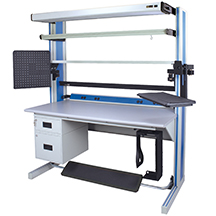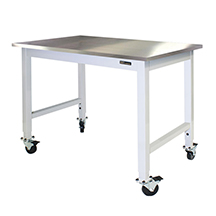Introduction to Ergonomics
11/05/2017
Introduction to Ergonomics Imagine your Average Jane. She wakes up, goes to the kitchen to sit and eat breakfast, goes back to her room to sit at her vanity and get ready, goes to the car to sit for her thirty minute commute to work, goes to her desk to sit for eight hours maybe getting up a couple times to go to a meeting or to get lunch. Later, she gets in her car to sit in forty-five minutes of traffic until she gets home. Now once she’s home, maybe she’ll have time to get some chores done, or maybe she’ll decide to sit on the couch and binge watch her favorite show. This happens five times a week every week.
Now think about your day; think about your surroundings, your body, and the interaction between the two right now. Odds are if you’re reading this, you’re sitting at your desk at work. Are you sitting up straight or leaning forward? Or maybe even reclined at the end of a long work day? Are your legs crossed? Or perhaps they’re stretched out in front of you on the footrest that’s angled under your desk. Now think about how many times you’ve shifted positions throughout the day. The human body is not meant to remain still for very long periods of time throughout the day. In fact, a static position, especially an awkward or uncomfortable one, can be harmful to your physical health after long enough. In order to accommodate this, businesses may implement an ergonomic design to their offices or work spaces.
Merriam-Webster defines ergonomics as “an applied science concerned with designing and arranging things people use so that the people and things interact most efficiently and safely.” This science essentially studies the body, its capabilities, and its limits and uses this information to create a workable space that’s conducive to productivity and wellbeing. The funny thing about ergonomics is that when it’s being utilized successfully, it often goes unnoticed, yet when someone is lacking an ergonomic design in the work place, it could be all they think about.
Now when I say it’s all they think about, I’m not talking about the science of ergonomics specifically; it’s more about the aches, pains, and inconveniences that the absence of ergonomics produces. Something as simple as Average Jane having her computer screen just a few inches too far off-center could result in a sore neck. The problem here is that most people don’t even realize what ergonomics is or the immense impact it has on employees, their work, and their wellbeing. As a result, it’s common for people to misattribute her neck pain to something unrelated like sleeping on it wrong, for instance.
Now, the problem is that the computer screen never gets moved over, Average Jane still has to turn her head, and her sore neck never goes away. This is why it’s so critical to the safety and comfort of employees to understand ergonomics and how its influential design can save time, money, and pain in the long run. To learn more about the ergonomic design, check out this post, or see it in action here!
 Buy Online Now!
Buy Online Now!
 Buy Online Now!
Buy Online Now!










